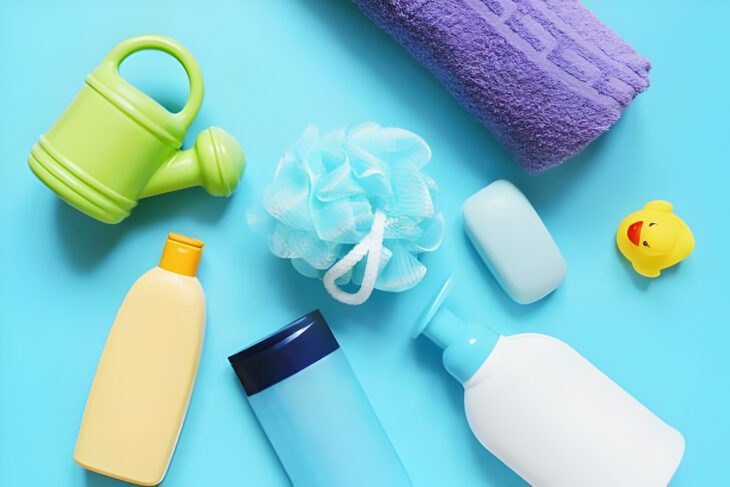Introduction
From soap dishes to toothbrush holders, the cleanliness of bathroom accessories contributes significantly to a hygienic and inviting space. Ensuring these items remain clean and well-maintained not only promotes hygiene but also extends their lifespan. Let’s delve into the essential steps and techniques required to maintain sparkling bathroom accessories.
Importance of regular cleaning
Understanding why consistent cleaning of bathroom accessories is pivotal for hygiene and preventing the accumulation of germs and bacteria.
- Regular cleaning of bathroom accessories is pivotal in ensuring a germ-free and hygienic space for daily use.
- It plays a fundamental role in preventing the buildup of harmful bacteria, mold, and grime on various surfaces.
- The consistent removal of dirt and contaminants aids in reducing the risk of infections and illnesses associated with unclean spaces.
- Bathroom accessories, when left uncleaned, can become breeding grounds for bacteria due to the moisture-rich environment.
- Through regular cleaning, the accumulation of soap scum, mineral deposits, and stains is effectively minimized.
- This practice not only maintains cleanliness but also upholds the visual appeal of accessories, preserving their original shine and aesthetics
- Regular maintenance prevents deterioration of materials, extending the lifespan of accessories and minimizing replacements.
- It contributes to a welcoming and relaxing atmosphere, ensuring a pleasant experience for users.
- The elimination of odors and unsightly marks elevates the overall ambiance of the bathroom.
- Daily routines become more enjoyable and refreshing when conducted in a clean and organized environment.
- Regular cleaning fosters a sense of pride in maintaining a well-kept space, enhancing one’s overall satisfaction.
- It aligns with health and safety standards, reducing the chances of slips or accidents caused by slippery or unclean surfaces.
- The practice of regular cleaning establishes habits that promote better hygiene and cleanliness in daily life.
- It aids in preserving the functionality and integrity of accessories, preventing premature wear and tear.
- Regular cleaning contributes significantly to a healthier living environment, particularly for households with children or individuals prone to allergies.
- It minimizes the need for extensive deep cleaning sessions, as consistent maintenance prevents the buildup of stubborn grime.

Different types of bathroom accessories
Bathrooms host a myriad of accessories made from diverse materials. Understanding the characteristics and maintenance needs of materials like porcelain, plastic, metal, and glass aids in tailoring cleaning methods to ensure longevity without compromising quality.
Soap dishes:
These hold bars of soap, preventing them from becoming soggy and maintaining cleanliness.
Tooth brush :
Designed to keep toothbrushes organized and hygienic, they come in various styles and sizes.
Towel bars/racks:
Essential for hanging towels, providing a convenient storage solution.
Shower caddies:
Offer storage for shower essentials, keeping items within reach during bathing.
Toilet paper holders:
Designed to securely hold toilet paper rolls, available in wall-mounted or free-standing styles.
Shower curtains and holders:
Not only functional but also add a decorative touch to the bathroom while providing privacy.
Mirrors:
Essential for grooming routines, available in various shapes, sizes, and styles.
Bathroom shelves:
Offer additional storage space for toiletries, towels, and decorative items.

Materials and their cleaning requirements
Each material demands specific cleaning approaches to prevent damage. Ceramic accessories might require gentle cleaners, while stainless steel accessories may benefit from non-abrasive solutions. Knowing the suitable cleaning agents and techniques for each material is crucial for effective maintenance.
Ceramic:
A common material for items like soap dishes and bathroom fixtures. Cleaning ceramic involves using mild detergents or baking soda mixed with water to avoid scratching the surface. A soft-bristled brush or cloth can effectively remove stains without damaging the finish.
Porcelain:
Similar to ceramic but often more delicate, requiring gentle cleaning. Mild soaps or specialized porcelain cleaners are suitable. Avoid abrasive materials to prevent scratches or dulling of the glaze.
Glass:
Glass accessories, like mirrors or decorative pieces, benefit from glass cleaners or a solution of vinegar and water. Microfiber cloths work well for streak-free cleaning without leaving lint behind.
Stainless steel:
Commonly found in faucets, towel racks, and showerheads. Stainless steel requires non-abrasive cleaners to avoid scratching the surface. A mixture of mild detergent and water, followed by drying with a soft cloth, helps maintain its shine.
Plastic:
Often used in toothbrush holders or soap dispensers. Cleaning plastic accessories involves using mild soap and water. Avoid harsh chemicals that might degrade or discolor the material.
Brass or copper:
These materials are susceptible to tarnishing. Specialized metal cleaners or natural solutions like lemon juice and salt can remove tarnish. Gentle polishing with a soft cloth restores shine.

Essential cleaning tools and supplies
Equipping oneself with the right tools and cleaning agents streamlines the cleaning process. Brushes, microfiber cloths, mild detergents, and vinegar-based solutions are among the essential items for ensuring a thorough and safe cleaning experience.
Troubleshooting stubborn strains and grime
Despite regular cleaning, some accessories might present persistent stains or accumulated grime. Providing effective solutions to tackle these challenges ensures a thorough cleaning experience.
Maintaining longevity of bathroom accessories
Beyond immediate cleaning, incorporating practices to maintain the quality and durability of accessories is essential. Proper care extends their lifespan, reducing frequent replacements.
Hygiene and safety measures
Maintaining a hygienic bathroom environment contributes to overall well-being. Adhering to safety measures while handling cleaning agents ensures a secure and healthy cleaning process.
Eco-friendly cleaning alternatives
Exploring environmentally friendly cleaning solutions aligns with sustainable living practices. Natural alternatives minimize the environmental impact while effectively cleaning bathroom accessories.

Organizational tips for bathroom accessories
A clutter-free and well-organized bathroom enhances accessibility and ease of cleaning. Implementing storage solutions and organizing accessories optimizes space and aesthetics.
Frequency of cleaning for different accessories
Understanding the cleaning needs and usage patterns of various accessories helps establish suitable cleaning schedules. Some accessories may require daily cleaning, while others can be maintained weekly or monthly.
Common mistakes to avoid
Identifying and steering clear of common cleaning errors prevents accidental damage to accessories. Avoiding abrasive tools on delicate surfaces or using harsh chemicals on sensitive materials preserves their integrity.
Product recommendation and reviews
Providing insights into reliable cleaning products assists in making informed decisions. Reviews and recommendations help in selecting effective and safe cleaning agents for different bathroom accessories.
Conclusion
Regular and thorough cleaning of bathroom accessories isn’t just about aesthetics; it’s a key aspect of maintaining hygiene and comfort. This guide emphasizes the significance of regular care and offers comprehensive strategies to ensure clean and well-maintained accessories, creating a welcoming bathroom environment for all.

